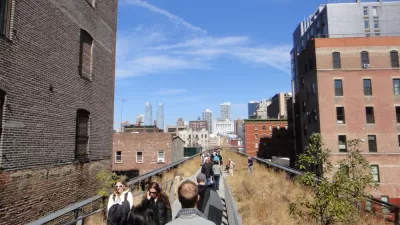A brief by the Cato Institute describes historic preservation laws as arbitrary and ambiguous. A case before the Supreme Court could decide on either side of the issue.

Nick Zaiac shares news of a new research brief from the Cato Institute that argues for consistency between the historic preservation rules of major American cities. According to Zaiac and the Cato Institute, preservation laws tend to be ambiguous and arbitrary as a result of "a difference in the ways various circuit courts interpret historic preservation." That is, "[t]he nation is split between areas governed by property-owner-friendly rules (the Third and Seventh Circuit Courts of Appeals), areas governed by regulator-friendly rules (the First, Second, Fourth, Sixth, Eighth, Tenth, and Eleventh Circuit Courts of Appeals), and areas where courts have not ruled (the Ninth and D.C. Circuit Courts of Appeals)."
The Cato Institute's brief supports the side of Stahl in a case currently before the Supreme Court, Stahl York Avenue Co., LLC. v City of New York and New York Landmarks Preservation Commission, in "[seeking] to iron out these legal ambiguities, and make the laws of the Third and Seventh circuit courts applicable nationwide."
FULL STORY: The Cato Institute Goes After Arbitrary Historic Preservation Laws

Planetizen Federal Action Tracker
A weekly monitor of how Trump’s orders and actions are impacting planners and planning in America.

San Francisco's School District Spent $105M To Build Affordable Housing for Teachers — And That's Just the Beginning
SFUSD joins a growing list of school districts using their land holdings to address housing affordability challenges faced by their own employees.

The Tiny, Adorable $7,000 Car Turning Japan Onto EVs
The single seat Mibot charges from a regular plug as quickly as an iPad, and is about half the price of an average EV.

As Trump Phases Out FEMA, Is It Time to Flee the Floodplains?
With less federal funding available for disaster relief efforts, the need to relocate at-risk communities is more urgent than ever.

With Protected Lanes, 460% More People Commute by Bike
For those needing more ammo, more data proving what we already knew is here.

In More Metros Than You’d Think, Suburbs are Now More Expensive Than the City
If you're moving to the burbs to save on square footage, data shows you should think again.
Urban Design for Planners 1: Software Tools
This six-course series explores essential urban design concepts using open source software and equips planners with the tools they need to participate fully in the urban design process.
Planning for Universal Design
Learn the tools for implementing Universal Design in planning regulations.
Smith Gee Studio
City of Charlotte
City of Camden Redevelopment Agency
City of Astoria
Transportation Research & Education Center (TREC) at Portland State University
US High Speed Rail Association
City of Camden Redevelopment Agency
Municipality of Princeton (NJ)





























